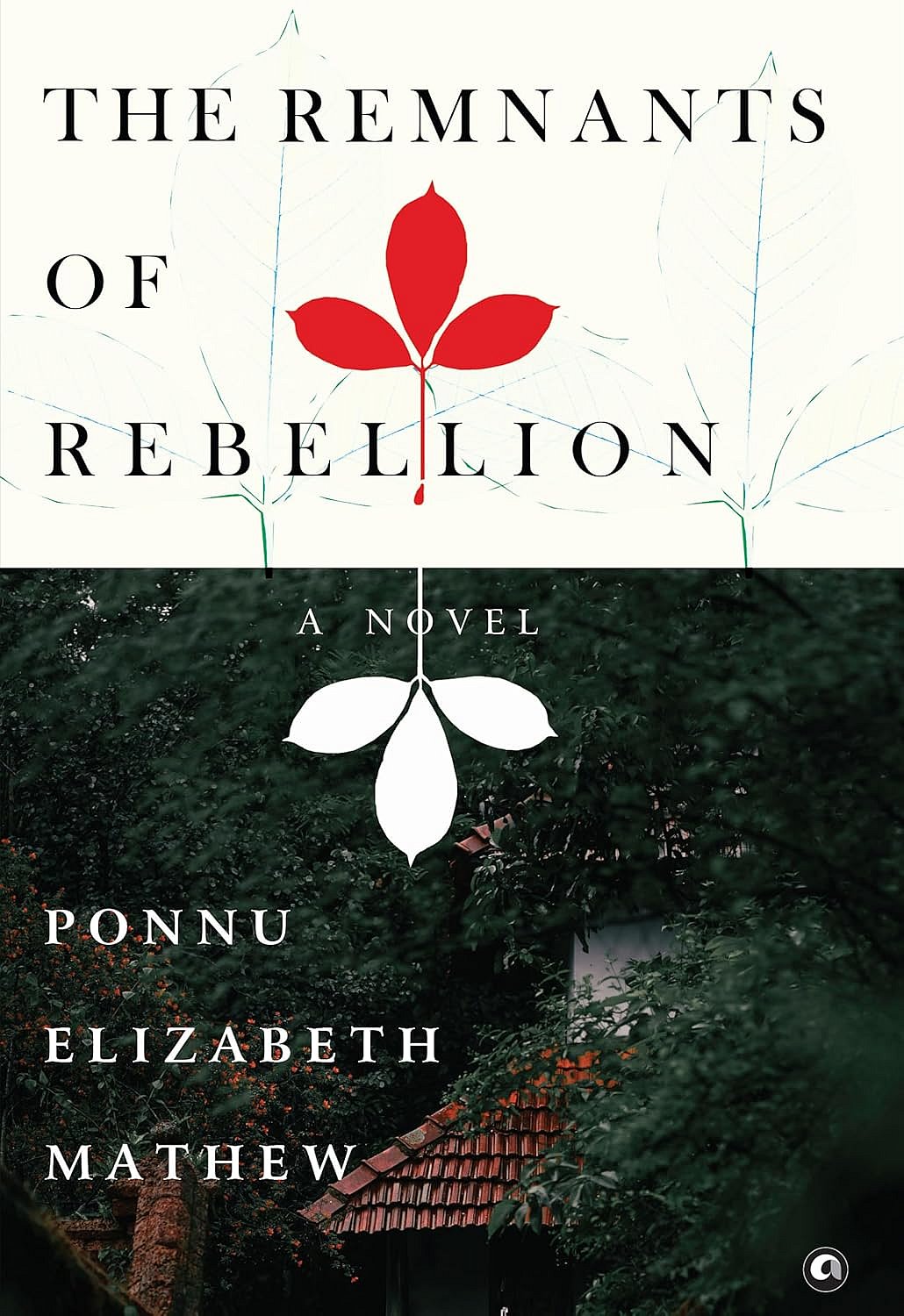A Debut Novel about Rebellions in Kerala

There are some stories that start in a way that lingers in your mind for long. Who, for instance, can forget the opening line of Rebecca by Daphne Du Maurier, “Last night I dreamt I went to Manderley again…”? The Remnants of Rebellion, the debut novel by writer, artist, and journalist Ponnu Elizabeth Mathew, starts on a similar note: “The taxi stops short of the vertiginous driveway. Aleyamma rolls down the window and looks up. The hill undulates towards the horizon, deep into the arms of the mist…”
While the book’s beginning is similar to gothic novels in its descriptions of old houses, Mathew’s writing takes one beyond that genre. The book delves into the history of Syrian Christian Malyalis, represented through three generations of a family, along with historic events. Along the way, it weaves in the Moplah rebellion; the Naxal movement; and religious, caste, and class discrimination, as well as the complexities of relationships.
The book’s protagonist, if one can say so about a multi-narrative-multi-generational story, is Aleyamma, an artist. She has recently lost Appacha, her maternal grandfather, and inherited a “house on the hill” from him. Grieving Appacha, and also trying to come to terms with a twist in her love life, she leaves Chennai and comes to the house in Puthuloor. Here, Aleyamma retreats, trying to understand the house and its neighbourhood, her grandfather, with whom she stayed for a while when she was eight, as well as her complicated relationship with her mother, Amma, who took Aleyamma away as suddenly as she had left her with Appacha earlier.
2026 New Year Issue
Essays by Shashi Tharoor, Sumana Roy, Ram Madhav, Swapan Dasgupta, Carlo Pizzati, Manjari Chaturvedi, TCA Raghavan, Vinita Dawra Nangia, Rami Niranjan Desai, Shylashri Shankar, Roderick Matthews, Suvir Saran
The story switches between the past delving into Appacha’s story as well as the present of Aleyamma. Appacha, or Eesho as he was known was born in Niranam, more than 300 km away from Puthuloor. The elder son of Mamma Mollykutty and Tharakan, Eesho displayed his gentle and calm nature by giggling through the service even while he was baptised. He was the favourite son of Mollykutty, until he met Kochu or Kochuthresia, at an intercollegiate event, and after romancing and marrying her, brought her home to Niranam. Mollykutty didn’t expect this as the first rebellion from her golden child, and that too for a girl who is Catholic. After the initial phase of anger and resentment, eventually she melts and accepts her daughter-in-law, and subsequently, is resigned to Eesho going for a job in a rubber estate because Kochu will be there to take care of him. Eesho and Kochu set off to his new job in his Hillman, accompanied by the wolf-like, but only in appearance, dog, Duke.
The estate, Eastman Estate, is at Puthuloor, and belongs to Ousepachan and Mary, who, in turn, has inherited it from her father. Kochu and he settle down there, despite its gory history.
The book interweaves between the time that Eesho and Kochu spend at the house, his troubles trying to navigate the running of the estate while trying to help the tappers, who go on a strike, inspired in part by the Naxal fervour of those times, against Markose, along with Aleyamma’s life with Amma and Amma’s boyfriend. Aleyamma also reminisces about her short but memorable time with Appacha when he saves her life, and comes to term with her present life in Chennai and her love triangle with a fellow artist, Roy.
It is a measure of the expertise of Mathew’s writing that one can read the book at one go, despite the many threads and shifting narratives. The book is also a valuable addition to the novels coming from the Malabar area, but from the perspective of life at rubber plantations, still bearing the aftermath of colonialisation and the rebellions against it.

